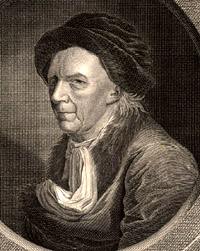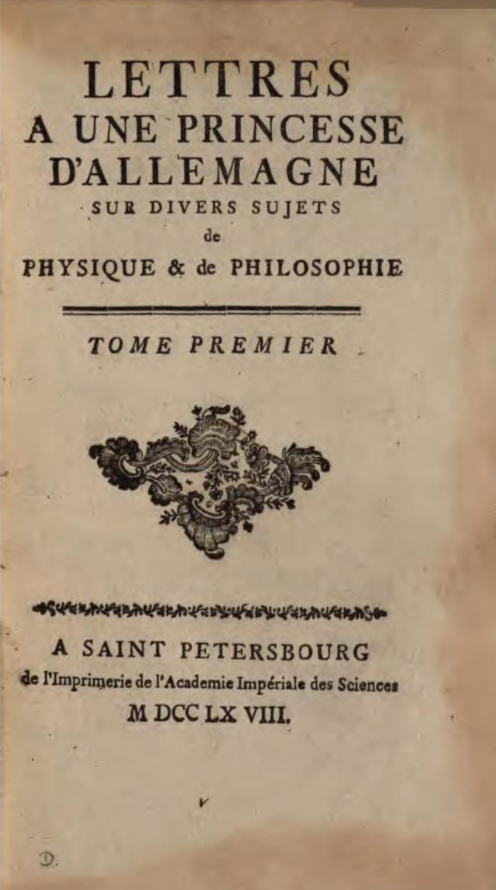- About MAA
- Membership
- MAA Publications
- Periodicals
- Blogs
- MAA Book Series
- MAA Press (an imprint of the AMS)
- MAA Notes
- MAA Reviews
- Mathematical Communication
- Information for Libraries
- Author Resources
- Advertise with MAA
- Meetings
- Competitions
- Programs
- Communities
- MAA Sections
- SIGMAA
- MAA Connect
- Students
- MAA Awards
- Awards Booklets
- Writing Awards
- Teaching Awards
- Service Awards
- Research Awards
- Lecture Awards
- Putnam Competition Individual and Team Winners
- D. E. Shaw Group AMC 8 Awards & Certificates
- Maryam Mirzakhani AMC 10 A Awards & Certificates
- Two Sigma AMC 10 B Awards & Certificates
- Jane Street AMC 12 A Awards & Certificates
- Akamai AMC 12 B Awards & Certificates
- High School Teachers
- News
You are here
Euler’s Letters to a German Princess: Translation and Betrayal
Suppose you had a goal of writing a short work that introduces the reader to the knowledge of almost everything—history and physics, astronomy and optics, logic and music, electricity and magnetism, theology and philosophy. How would you begin? What would be the final result? Perhaps, as with Bill Bryson’s 524-page A Short History of Nearly Everything [2003], you would discover that brevity is a relative concept.
Great mathematician Leonhard Euler (1707–1783) set himself precisely this project in what became Lettres à une Princesse d’Allemagne (Letters to a German Princess). Over the course of 234 letters written originally to Princess Charlotte Ludovica Luisa (a second cousin to Frederick II of Prussia), Euler laid out for the non-scientist the basics of a dozen disciplines. After the missives were published between 1768 and 1772 as a three-volume book, the work proved immensely popular. By the end of the eighteenth century it had been translated into almost every major European language and had gone through several dozen printings. In this article, we look at how asking questions about the first letter in the collection leads to questions about the chronology of the history of science, which in turn trigger questions about the translation process, which finally prompt questions about the motivations of those who edit subsequent editions of a publication. This is thus a story that can be used in the classroom to underscore the value of critical thinking with students bombarded outside the classroom by multimedia of various quality and promoting various agendas. We also hope, though, that instructors and students are inspired to dig further into the mathematical and scientific content of these remarkable volumes.
|
Figure 1. Leonhard Euler. |
Figure 2. Title page for volume 1 of Euler‘s |
This essay is adapted and updated from two columns [Klyve 2011a; Klyve 2011b] that originally appeared in the newsletter of the Euler Society.
Dominic Klyve (Central Washington University), "Euler’s Letters to a German Princess: Translation and Betrayal," Convergence (December 2020), DOI:10.4169/convergence20201207






